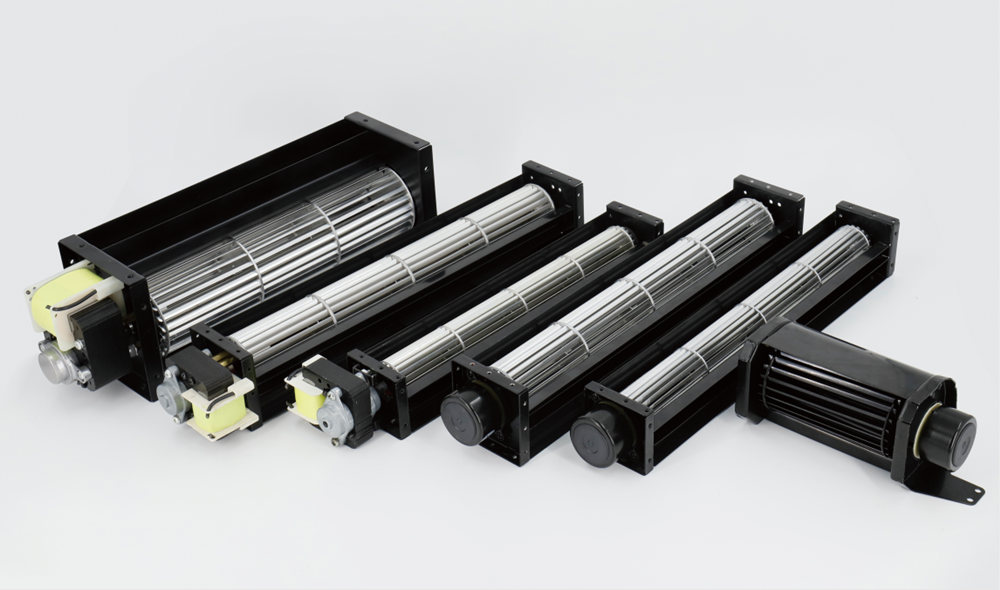Generally, a cross flow fan has a multi-blade, long cylindrical impeller with forward multi-wing blades. At present, our cross flow fans are mainly divided into two types: AC cross flow fans and DC cross flow fans.
Cross flow cooling fan has a complicated internal structure. Although its impeller circumference is symmetrical, its airflow activity is asymmetrical, and its relative velocity field and absolute velocity field are unstable. The moving medium enters the impeller twice, and the rotor impeller moves along the circumference constantly.
There is a vortex on the inner side of one side of the impeller circumference that can control all airflow activities, that is, the so-called bias vortex of the cross flow fan. The vortex base is somewhere in the inner circumference of the impeller, and moves along the circumferential direction with different saving situations. It is the existence of this eccentric vortex that leads to cross flow.
Under certain working conditions, when the cross flow fan rotates at high speed, the gas in the cross flow fan cannot be discharged or sucked normally because of the enhanced control force of the eccentric vortex, and the experimental system presents an abnormal situation, which is called surge scene.
If the vent area is small, the resistance of the resistance layer is large, and the flow rate in the pipeline is small, the operation request of the cross flow fan is low, and the effect of deflecting the vortex is not obvious under the small flow rate. However, when the rotating speed is high and the vent area is large, the control force of the eccentric painful vortex is enhanced, and the gas in the cross flow fan can not be discharged or inhaled normally, so the experimental system is abnormal.
